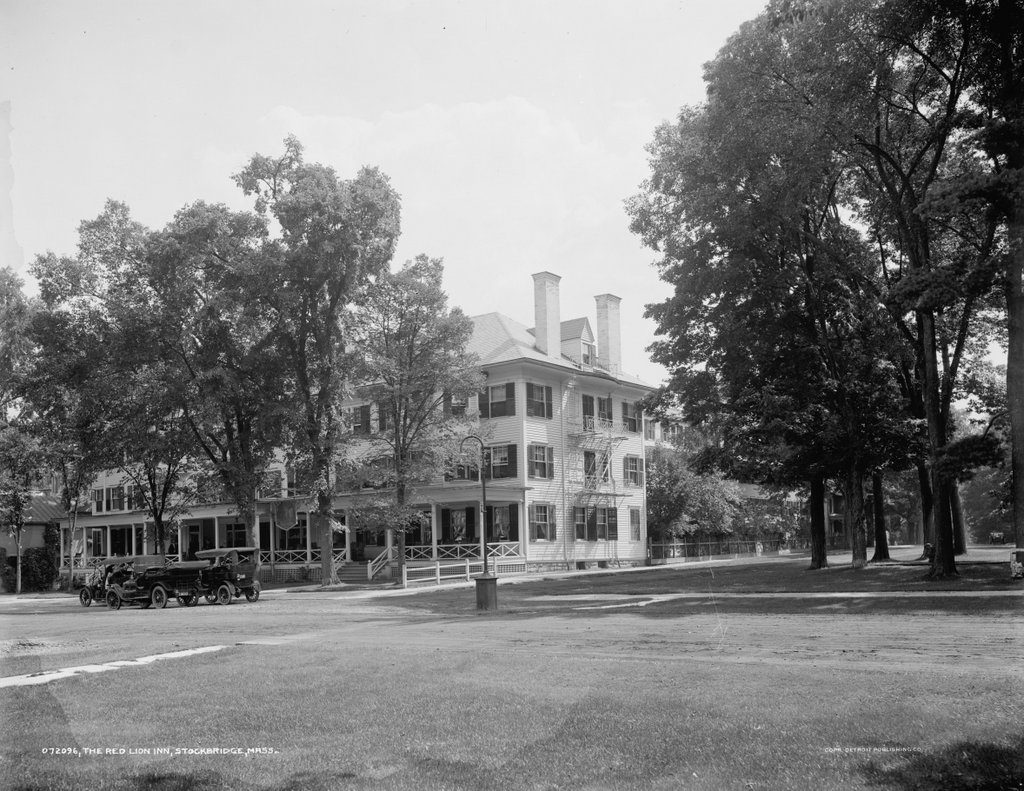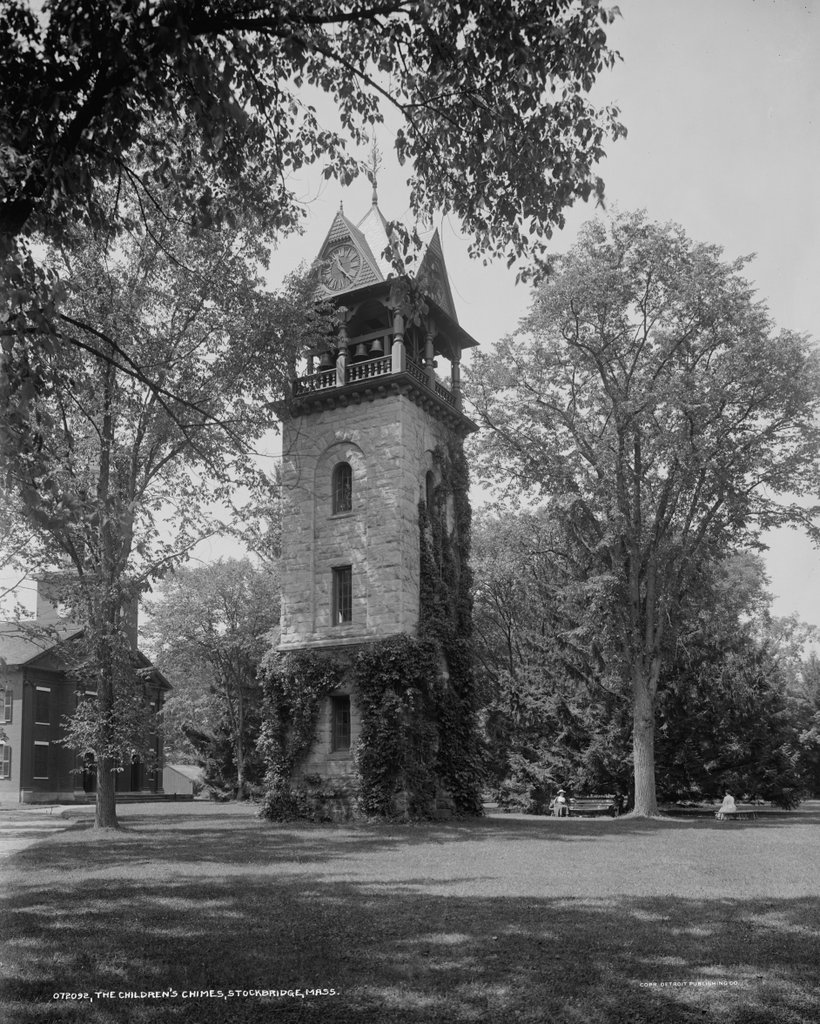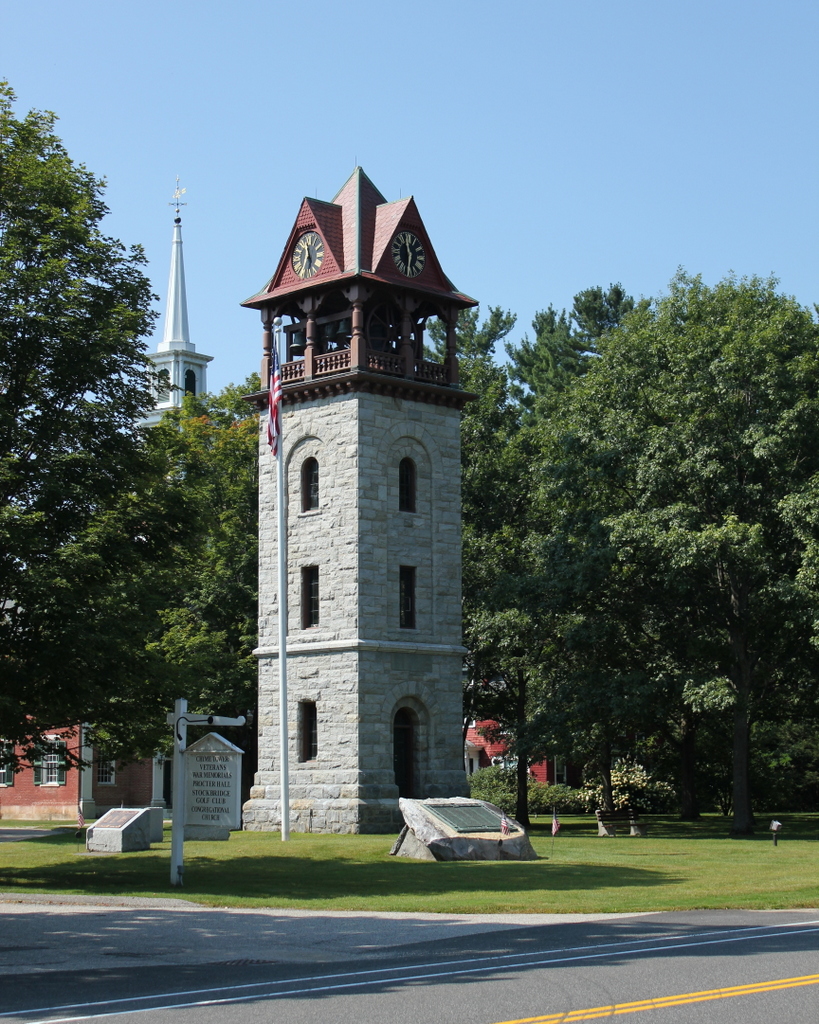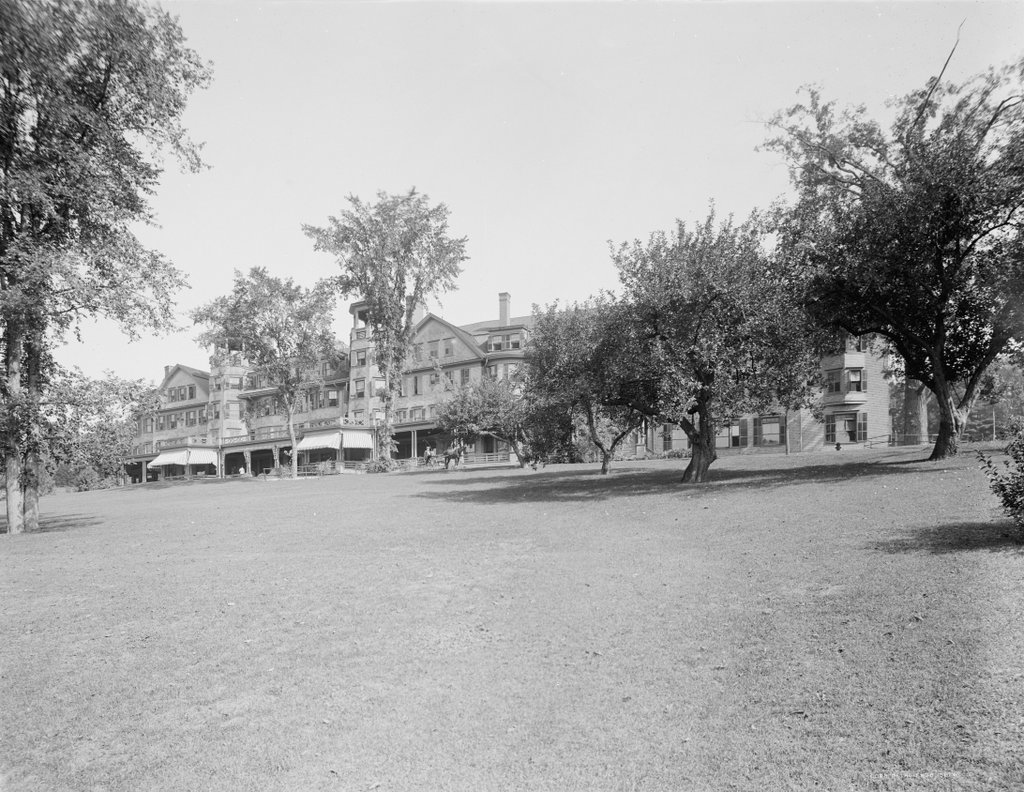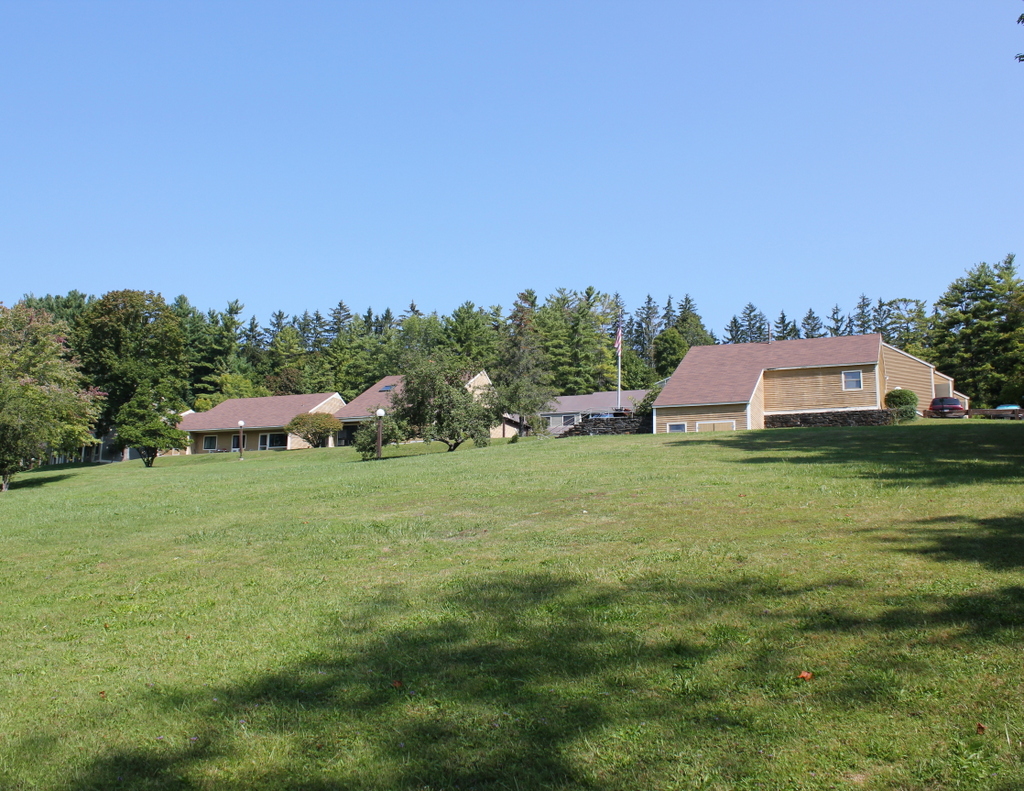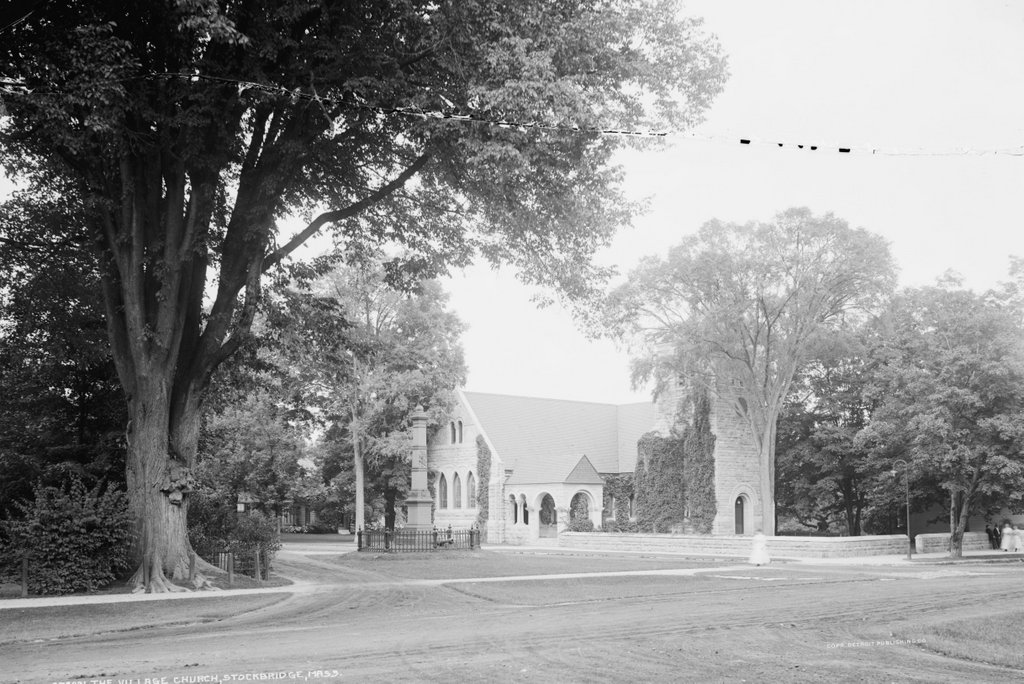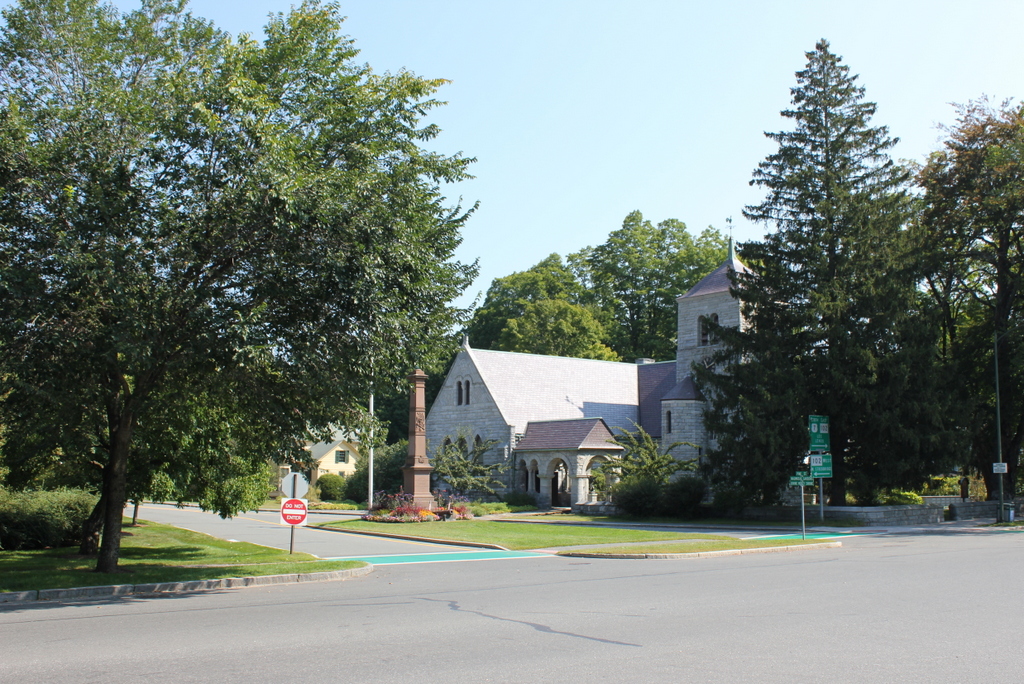The Red Lion Inn at the corner of Main and South Streets in Stockbridge, around 1905-1915. Image courtesy of the Library of Congress, Detroit Publishing Company Collection.
The building in 2016:
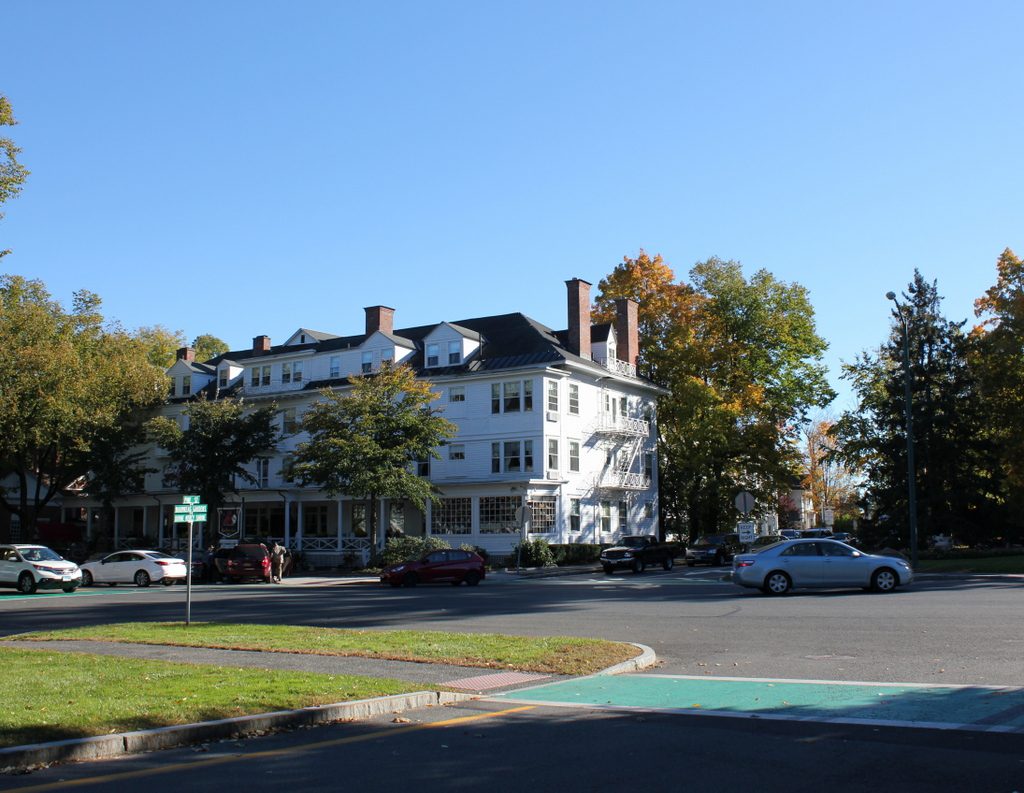
The origins of the Red Lion Inn date back to 1773, when Silas Pepoon opened a tavern here in the center of Stockbridge. Taverns in colonial America often used distinctive signs to identify themselves, and Pepoon’s tavern sign featured a red lion with a green tail. Although its name would later be derived from the old sign, it was originally known simply as the Stockbridge House. In 1862, it was purchased by Charles and Mert Plumb, and in the decades that followed the hotel enjoyed success, with the Berkshires becoming a popular summer destination. During this time, the hotel was steadily expanded, and 1891 it was renamed Ye Red Lion Inn. Five years later, though, the historic building was completely destroyed in a fire.
The Plumbs rebuilt on the same site, although by now the hotel was being run by their nephew, Allen T. Treadway. A future state legislator and Congressman, Treadway also built the nearby Heaton Hall hotel, and he owned the two properties until his death in 1947. His son, Heaton, sold both hotels in 1955. By this point, many of the grand hotels of the Gilded Age had been destroyed by fires, or had closed during the Great Depression. Those that remained, such as the Red Lion and Heaton Hall, struggled with declining business, with tourists increasingly preferring modern, more convenient motels.
Both hotels were sold again in 1969. Heaton Hall was demolished a few years later, but the Red Lion Inn was purchased by Jane and Jack Fitzpatrick, the founders of Country Curtains. The ground floor of the inn became the company’s first permanent location, while the upper floors remained a hotel. Around the same time, Norman Rockwell, a longtime Stockbridge resident, featured it in his famous Stockbridge Main Street at Christmas painting. Since then, the inn has continued to be a prominent landmark in the center of town, and is one of the few surviving grand hotels in the Berkshires from the 19th century.

